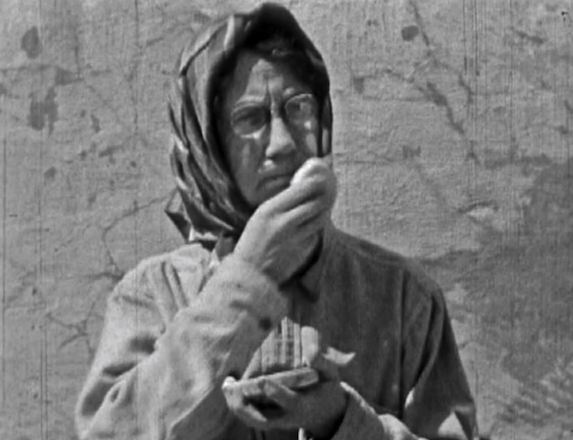Amateur Cinema Between the Wars in the USA
by Charles Tepperman
Amateur Cinema developed rapidly in the USA during the 1920s and 30s. Even before the introduction of the 16mm film format in 1923, the idea of amateur filmmaking was already in circulation, and artists and non-professional filmmakers of various kinds made films using the 28mm and 35mm formats. But amateur filmmaking grew rapidly in the years following the introduction of 16mm, with significant clubs and organizations established by the end of the decade. By the early 1930s - and aided by the introduction of 8mm film in 1932 - amateur moviemaking was a rapidly growing creative movement in the USA.
This page provides an introduction to amateur film culture in the USA. The timeline below sketches out key events and contexts during this period; you can also explore a map of amateur movie clubs that were established in the USA during the 1920s and 30s; finally, a list of noteworthy films provides a starting point for understanding the range of different types of amateur films that were produced in the USA.
To read more about how amateur film was conceptualized in the USA (and elsewhere), visit the Dossier section of this site. You can also find articles on the website which provide additional context about the Amateur Cinema League, the Photoplay Amateur Movie Contest, and Amateur Cinema and Experimentation in the 1920s and 30s.
Amateur Movie Clubs
Click on the points below to find out more about each movie club.
Significant Films
The selected films provide an introduction to amateur filmmaking in the USA during the 1920s and 30s. Follow the links for more information and to view the films (where available).

Manhatta (Charles Sheeler and Paul Strand, 1921)
This poetic portrait of New York is considered to be the earliest experimental film made in the USA. Collaboratively produced on 35mm by two artists, it was first screened in a commercial movie theater. Though perhaps not precisely an amateur production itself, the critical response to this film proposed that a “little movie movement” outside the commercial production world was needed to create an environment where artistic experiments in cinema could take place. The amateur film movement that emerged later in the 1920s would claim the terrain of film experimentation as part of their mission. Added to the National Film Registry in 1995.
For more information. Watch the film.

Mag the Hag (Hiram Percy Maxim, 1925)
An amateur fiction film shot and edited by Hiram Percy Maxim (1869-1936), inventor and founder of the Amateur Cinema League. It features Maxim’s daughter, Percy Maxim Lee, in the lead role of Percy Proudfoot.
For more information. Watch the film.

The Fall of the House of Usher (James Sibley Watson, Jr. and Melville Webber, 1928)
This modernist adaptation of Edgar Allan Poe’s short story provided North American amateurs with the first example of successful film experimentation from among their own ranks. It was widely screened and discussed, both in amateur circles and far beyond. Added to the National Film Registry in 2000.
For more information. Watch the film.

H2O (Ralph Steiner, 1928)
H2O’s dramatic combination of straight photography and abstracting composition brought Steiner’s film to the attention of Photoplay magazine, and it subsequently won first prize in the non-dramatic category of the magazine’s 1929 amateur film competition. Steiner trained as a still photographer but this was his first finished film; he would go on to make several other artistic films before turning to documentary. Added to the National Film Registry in 2005.
For more information. Watch the film.

The Forgotten Frontier (Marvin Breckinridge, 1930)
This documentary film presents the activities of the Frontier Nursing Service, a group (primarily women) that provided medical services in remote and rural areas of Kentucky.
It received a special mention in the Amateur Cinema League’s first annual Ten Best list in 1930 as “the most ambitious amateur made welfare film yet recorded.” Added to the National Film Registry in 1996.
For more information. Watch the film.

A Study in Reds (Miriam Bennett, 1932)
A short fiction film which considers how the small town of Kilbourn, Wisconsin, might look if it were placed under Soviet administration. Though espousing anxiety about communism, It is primarily a playful parody of how women’s “society” in America is regimented and comical in its own right. Added to the National Film Registry in 2009.
For more information. Watch the film.

Mr. Motorboat’s Last Stand (John A. Flory, 1933)
Hailed as the best amateur experimental film of 1933, the film is a Depression era comic-fantasy about the destitute protagonist’s efforts to imagine himself as dignified, distinguished, and even affluent, despite living in a junkyard and selling apples for a living. Played by the African American vaudeville performer Leonard “Motorboat” Sturrup, Mr. Motorboat is reminiscent of Chaplin’s Tramp; he displays a similar poise and deliberation in the face of poverty and ridicule.

America’s Disinherited (Alan S. Hacker, 1937)
A documentary about share-croppers in the American South. As Movie Makers reported, “Made to aid the Southern Tenant Farmers’ Union, the production illustrates the agricultural despotism and destitution which have resulted in the formation of that group bargaining organization.”